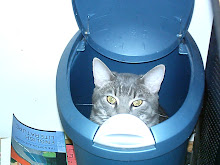
Ever since I was little I've been fascinated by space. From the ancient myths about the constellations (a post all it's own, hopefully coming soon) to planets, stars, and other solar systems, I love to just contemplate the universe. Just yesterday I was walking across the parking lot at work and I couldn't help but look up in awe at how massive the universe is and how tiny we all are.
Today's post is a picture post of some amazing space images, which will certainly make you feel just a little insignificant:
The clouds and gas in the image were taken by the Herschel Observatory. This picture show the materials just starting to condense into stars in our Milky Way galaxy.
Yet another star-forming cloud taken with the Spitzer telescope.
Another image from the Spitzer telescope of a spiral galaxy in Ursa Major (46 million light years from Earth). Like most images of space, this is actually a composite of three different images (blue, green, and red capture different infrared wavelengths).
1400 light years away, this very faint "reflection nebula" sits on the edge of the Milky Way galaxy near the Cepheus constellation.
This amazing picture is actually restored from a 1966 picture of Earth taken from the moon. What an amazing perspective!
This picture from the SOHO satellite was taken in 2000. Not only does this picture actually offer a full shot of what our sun looks like, in the bottom left corner there is also an "erruptive prominence" snaking out from the sun. This "claw" is so huge that ten Earths could fit inside of it. That's one huge fireball!
Probably one of the most famous constellations is that of the great hunter Orion. In the Northern hempisphere, it is one of the easiest winter constellations to spot, specifically because of the three stars ( Alnitak, Alnilam, and Mintaka) that make up Orion's belt. These three stars are each hotter than our sun and are 1500 light years away from Earth.
The Gum Nebula is so large and expansive that we are less than 500 light years from its front and nearly 1500 light years from its back.
The Crab Nebula is one of the most famous because it's so beautiful and interesting (of course, the colors represented here are once again, a mosaic of several images). The Crab Nebula spans 10 light years and contains a pulsar at the center that has as much mas "as the sun...but is only the size of a small town."











0 comments:
Post a Comment